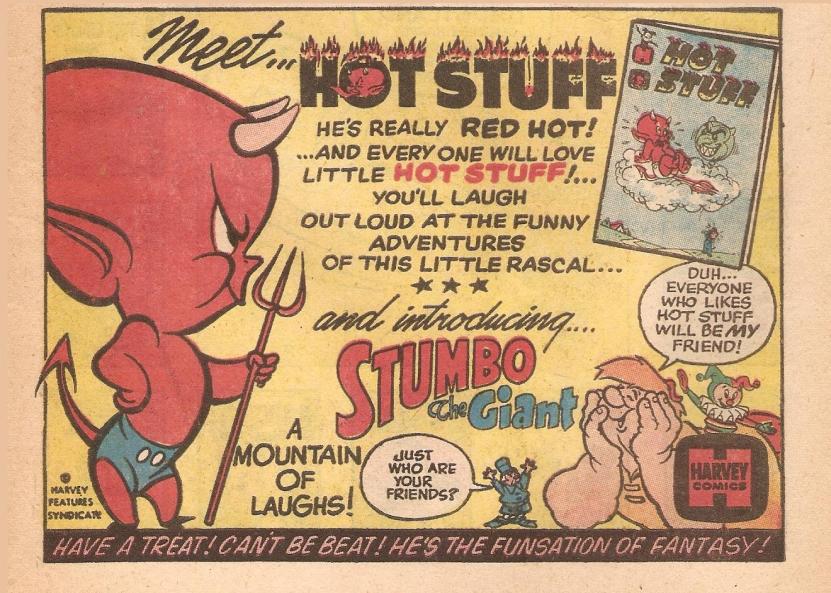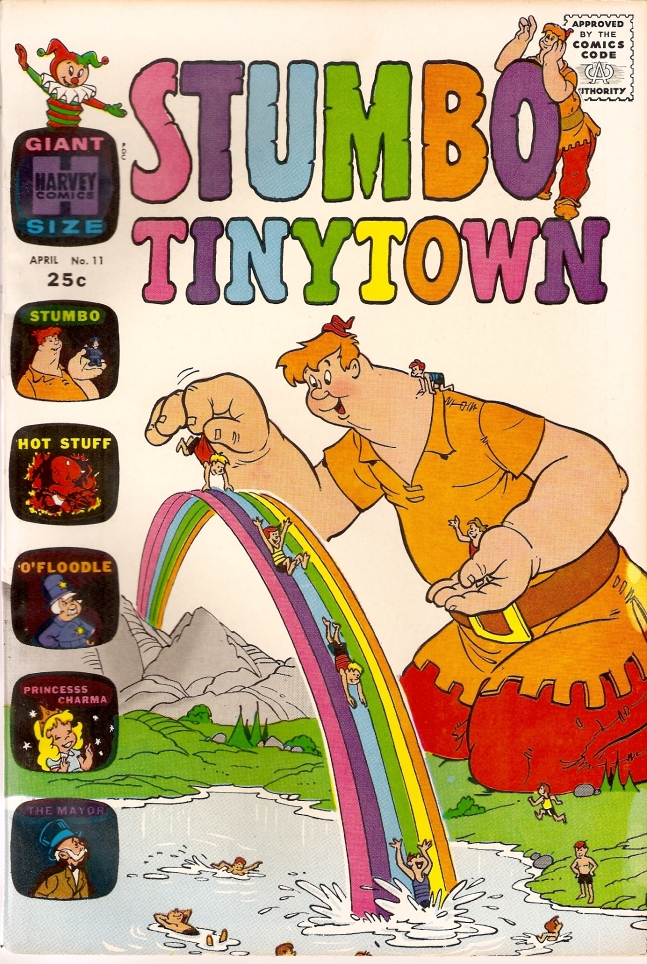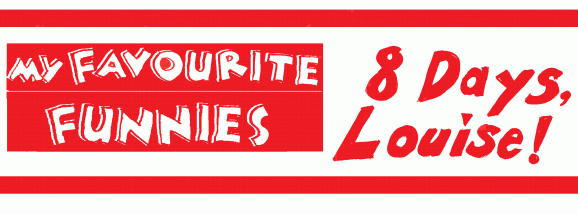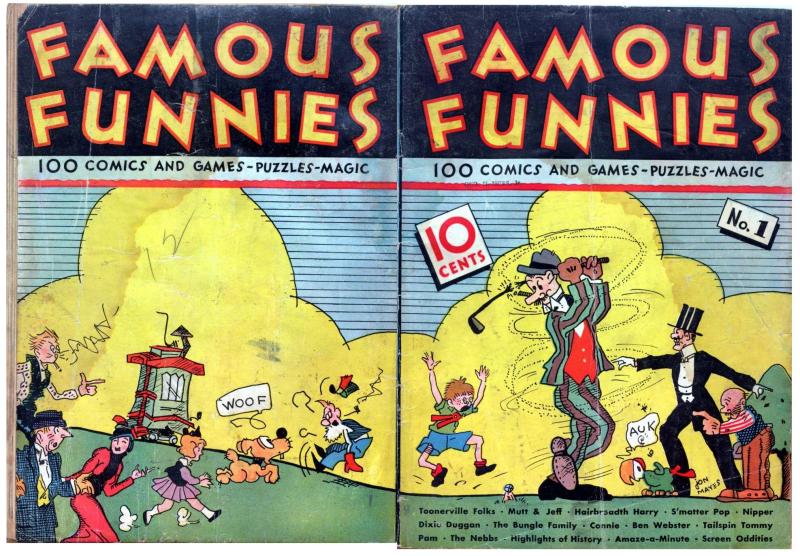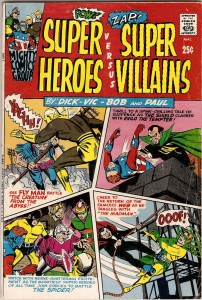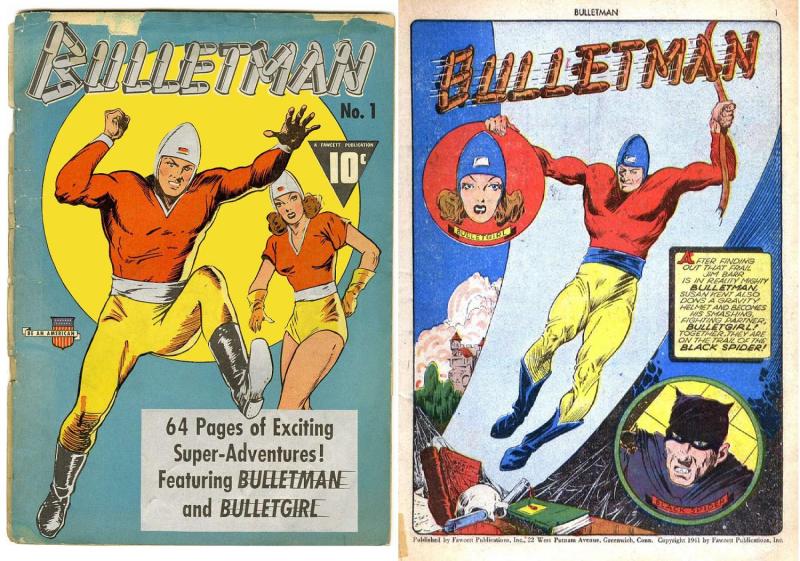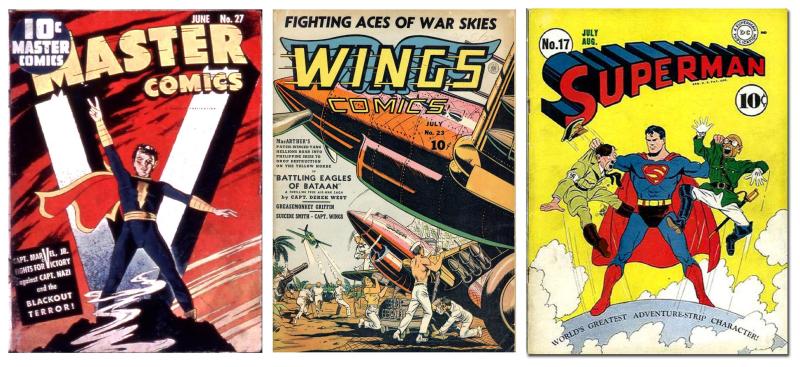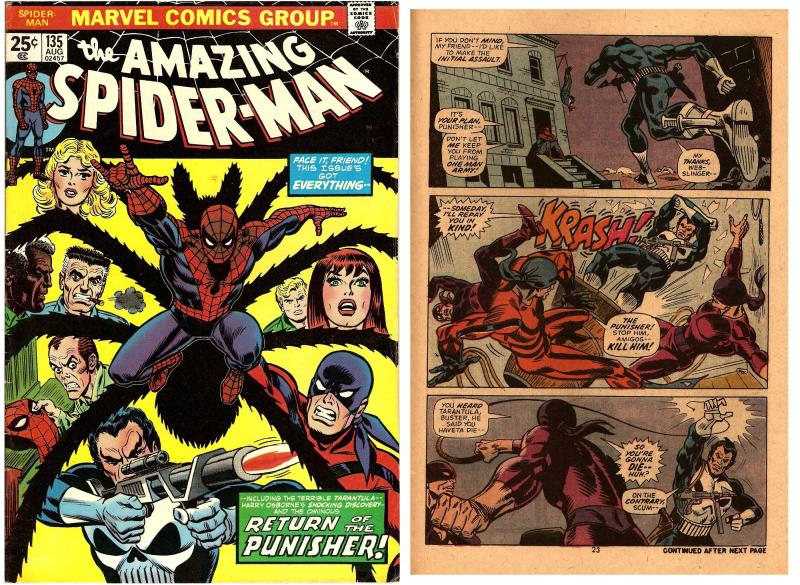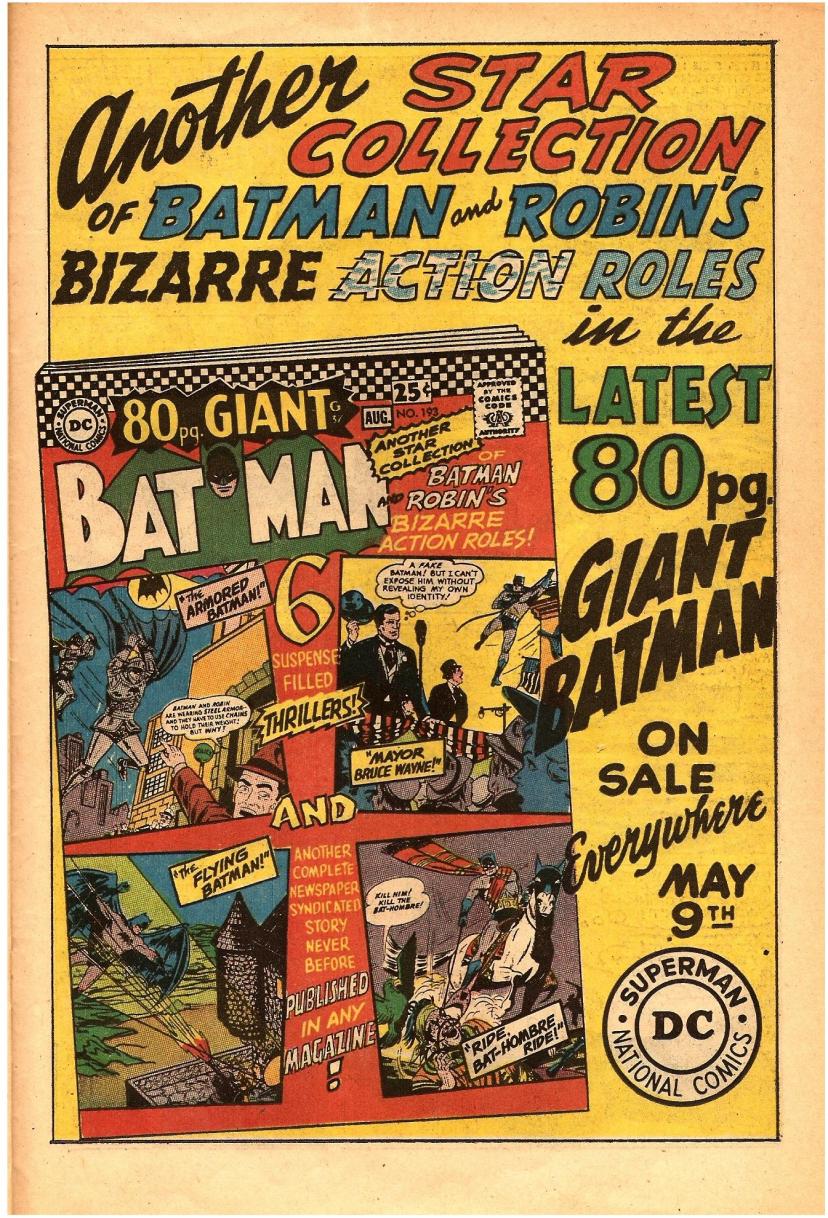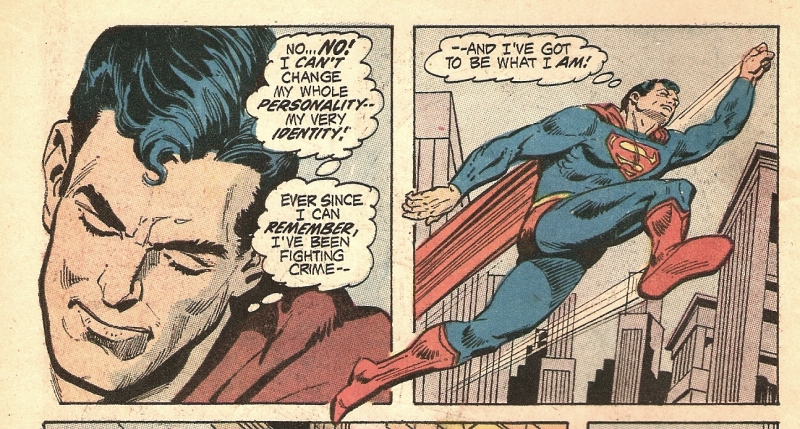by Jimmm Kelly

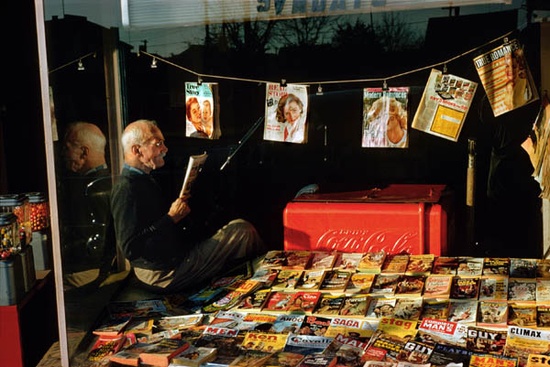
–photo by Fred Herzog
it runs in the family
For some fifty years now, ever since I was about five years old, I’ve had a scar on my forehead which becomes more pronounced when I’m in a bad mood. The scar was my reward for being too quick for my own good.
When I was little, I hung around with my sister (not quite two years older than me) and a neighbour boy named Jay, who was somewhere in between either of us in age. My sister would challenge us two boys in tests of skill and bravery and then she’d judge who was best. In a test of who was fastest, we decided to run along the length of the sidewalk in front of my house. The house was on a corner lot.
I was a pretty good runner, except that it took such a supreme effort I would close my eyes, when summoning every ounce of speed. So I had my eyes completely shut that day and ran into something. BAM!
***
Not sure what had happened or if anything had happened, I didn’t see anything, but I heard my sister howling with terror. Apparently I had veered off course and run right into the street pole on the corner of our block.
I was aware that something wet was covering my whole face–blood–and this is what elicited my sister’s screams of horror. I was rushed into the front door of our house, with my sister yelling that I had bashed my head open. My dad scooped me up in his arms and carried me right through the house and out the back door, through our back yard, to the alleyway where Jay’s father had driven up in his car (my dad didn’t have a car, nor even a driver’s license).
***
friendly giants
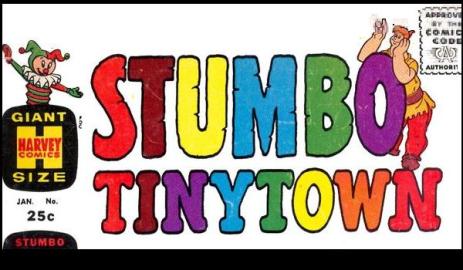 I was taken immediately to the local clinic, where I got stitches. The doctor who stitched me up was named Doctor Little. I thought this was very funny, because he was quite a big man.
I was taken immediately to the local clinic, where I got stitches. The doctor who stitched me up was named Doctor Little. I thought this was very funny, because he was quite a big man.
Some weeks later, my mom took me to Doctor Little’s office to have my stitches out. It was common custom, whenever I went to the doctor or the dentist, that I would get a reward if I had been a good boy. In a store near the doctor’s office, after I had shown stoic courage, I sought out my prize. After considering all the available options, I chose a Giant-Size STUMBO TINYTOWN comic book. [Might’ve even been No.1, as that’s likely the only issue that would’ve been in Vancouver at the time, but back then I didn’t look at the numbers–just the pictures!]
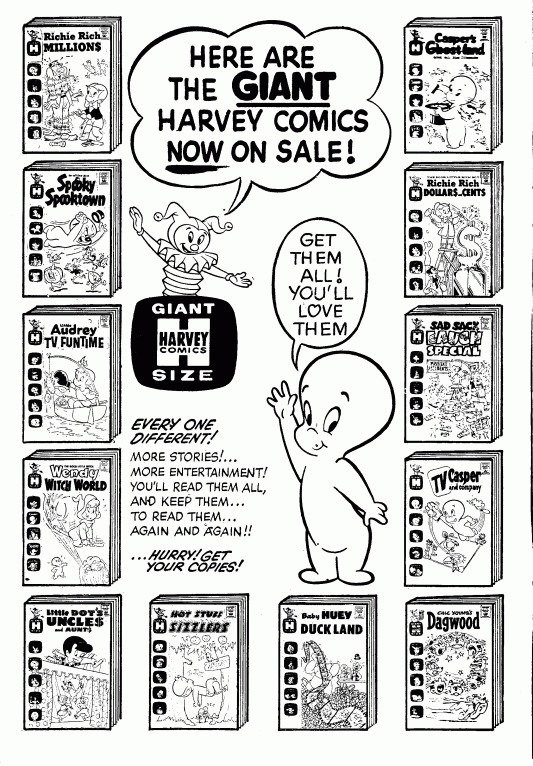 Kids all swapped around issues of different Harvey Comics. Those days they were my favourite funny books–HOT STUFF, CASPER, WENDY, and the like. And Stumbo the Giant was a guy who made me laugh, whenever he appeared in other comics. So this was a whole giant comic with him as its star! However, the real reason I liked Stumbo so much is that I thought he was the Friendly Giant.
Kids all swapped around issues of different Harvey Comics. Those days they were my favourite funny books–HOT STUFF, CASPER, WENDY, and the like. And Stumbo the Giant was a guy who made me laugh, whenever he appeared in other comics. So this was a whole giant comic with him as its star! However, the real reason I liked Stumbo so much is that I thought he was the Friendly Giant.
For many years every weekday for fifteen minutes a day, THE FRIENDLY GIANT would invite Canadian children to visit his castle. Friendly was a gentle giant just like Stumbo, and they dressed a lot alike–so to me they were the same guy.
*
Friendly played a recorder.
Every show started with him asking us to come visit him in his castle and–as he let down the draw-bridge so we could come inside the castle–his recorder and Rusty’s harp played EARLY ONE MORNING. Rusty was a rooster and Jerome was a giraffe–they were both voiced by puppeteer Rod Coneybeare.
***
giants among men
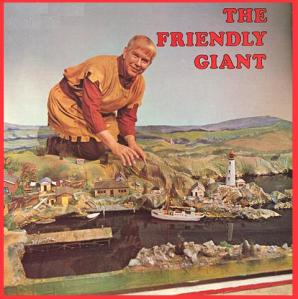 The man who created Friendly on my TV screen was Bob Homme. The man who created Stumbo on the page was Warren Kremer.
The man who created Friendly on my TV screen was Bob Homme. The man who created Stumbo on the page was Warren Kremer.
Bob Homme was in fact an American, born March 8th, 1919, in Stoughton, Wisconsin. Homme first developed THE FRIENDLY GIANT in 1953 in Wisconsin, but moved the program to Canada in 1958 where it continued until 1984.
Warren Kremer was born June 26th, 1921, in the Bronx, New York. Kremer came to work at Harvey in 1948 where he ended up drawing every character, at one time or another, plus all the covers.
“Hot Stuff’s towering co-star, Stumbo, began as an offshoot of a one-shot story [Forever Ember, HOT STUFF, THE LITTLE DEVIL No. 2 (December ’57)] as an unnamed giant terrorizing the forest. Kremer saw something visually exciting in such a character and revised him for several single page gags in [the following issue]. Kremer seemed to delight in drawing unusual perspectives and characters of different scale and Stumbo provided a natural outlet to really utilize his artistic abilities. The character became popular enough, . . . but alas despite full support of Harvey Comics, his solo comic books . . . did not succeed. They were a rare misstep for the company. Since 1966, Stumbo has remained simply a beloved co-star [for Hot Stuff]–and a cult favorite [sic] amongst Kremer’s die-hard fans.”
—Jerry Beck, introduction to HARVEY COMICS CLASSICS VOLUME THREE: HOT STUFF THE LITTLE DEVIL (Dark Horse, 2008), p. 10.
***
the land of the giants
Stumbo got a few try-outs in the regular-size HARVEY HITS (a spotlight mag for the various Harvey characters), starting in 1961, before headlining the quarterly STUMBO TINYTOWN, in 1963 (and continuing until 1966). As Stumbo served as a regular feature in Hot Stuff’s own comic, so the Little Devil returned the favour by appearing in every issue of STUMBO TINYTOWN. Actually, a good amount of the material in this Giant-Size comic was reprinted from earlier funnies.
The other important supporting characters were the people of Tinytown–who varied in scale to the Giant. Were they meant to be very tiny people or regular size people dwarfed by Stumbo? Stumbo’s dedication to the Tinytowners was matched by their dedication to him.
At times, it seemed like they were his children, but other times it seemed like he was their overgrown adopted child. “It takes a village to raise a child,” they say.
Stumbo’s world was a pastoral one. Tinytowners didn’t want to live in a big city, they preferred to be in their little village. They didn’t want the big city lifestyle–they treasured peace and quiet.
***
something to sing about
There weren’t big conflicts in Stumbo features, which were gags between one and five pages long. Some were about a simple misunderstanding, while others were merely about the environment that Stumbo occupied (one where even the sun and the clouds had human qualities).
I think this is what I liked about those funnies–they tickled my funny bone–that’s all. They were suited to a child’s short attention span. Likewise with THE FRIENDLY GIANT. Only fifteen minutes long–just long enough to come inside the castle, pull up a rocking chair, listen to a little story or hear a bit of music, and then it’s time to be off again.
THE FRIENDLY GIANT was suited to the Canadian mindset. A myth that many Canadians wanted to believe about their land. It’s a giant of a country, but gentle and friendly at heart and not wanting any trouble.
For chidren, the idea of a gentle giant was reassuring. Little kids live in a world populated by giants–many of them frightening. Always looking up at bigger people, even bigger kids–those giants are so much larger on a child’s scale. The idea that a giant can be a friend puts the mind at ease and calms the fears.
***
a giant in every house
Giant-Size meant that the comic had 64 pages (plus cover)–at least in the case of Harvey and some other publishers. National Periodical Publications (DC) had Giants that were 80 pages. It would be awhile before I discovered those ones. Regular comics, of course, were a mere 32 pages (plus cover).
There was a price to pay for such excess–25 cents to be exact (in Canada and the USA). But this was a bargain, if you worked out the pages per penny ratio (subtracting ad copy). And no sales tax. My dad was always surprised by that, whenever I got him to buy me a comic. Back then they didn’t tax a child’s desire to read or to dream.
Everybody I knew had worked it out that Giants were a smart deal (even those that weren’t good at textbook math). I expected that every house I visited would have a stack of funny books and in every stack there’d be giant-size comics–often without a cover. Giants lost their covers much more easily than the regular size.
A few years after I got my scar, a coverless Giant-Size superhero comic came into our house (it’s impossible to know where many of the comics in our house came from, ownership was transferred so often) and this soon became my favourite funny book. I read it over and over and over, until it was falling apart. Without a cover to identify it, decades passed before I found the name of this comic: SUPER HEROES VERSUS SUPER VILLAINS, published by Radio Comics (aka Archie Comics), and featuring theMighty Crusaders. I still have that falling apart Giant, although it’s lost many of its page and it never had a cover.
As for the STUMBO TINYTOWN that my mother bought for me, I have no idea what happened to that funny book–maybe it was passed off to some other kid in another house. Giants do tend to wander.
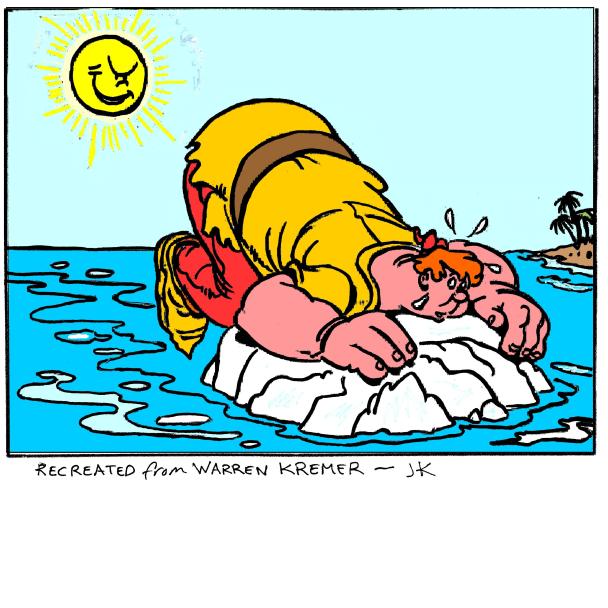
***
Good Night, Friendly–
___________________________________
NEXT ISSUE: The Last Days of the Dynamic Duo!
___________________________________
8 DAYS, LOUISE!
***
SOONER OR LATER–the Grass Roots (with Mary Arnold from the First Edition)
. . . sooner or later love is gonna getcha in the first week in May . . .
The first regularly published comic book for sale in the standard format, FAMOUS FUNNIES No. 1 (July ’34) goes on sale May 1st of ’34–featuring Mutt & Jeff, Joe Palooka, Donald Dare, Dixie Dugan, Pam, Connie, Hairbreadth Harry, and others. The brainchild of Harry I Wildenberg, a sales manager for the Eastern Color Printing Company of Waterbury, Conn., modern comic books were initially conceived as advertising premiums, given away at Gulf Oil gas stations. Along with salesman M.C. Gaines, Wildenberg enlisted other advertisers into using Eastern Color’s comic books as promotional giveaways.
Wildenberg and Gaines then considered sticking a 10c price tag on comic books and selling them directly to children. They approached the Woolworth’s chain as a possible outlet but were told 64 pages of old comics wasn’t good enough value for a dime. Eventually, in 1934, Wildenberg persuaded the American News Company to distribute a monthly comic book to newsstands across the country. He called this magazine FAMOUS FUNNIES, a title he originally thought up for a soap company premium. The intial issue sold 90 percent of its 200,000 copies. Eastern Color lost over $4,000 on that one, but by issue 12 FAMOUS was starting to net $30,000 a month.
–RON GOULART’S GREAT HISTORY OF COMIC BOOKS (Contemporary Books ’86), p. 7.
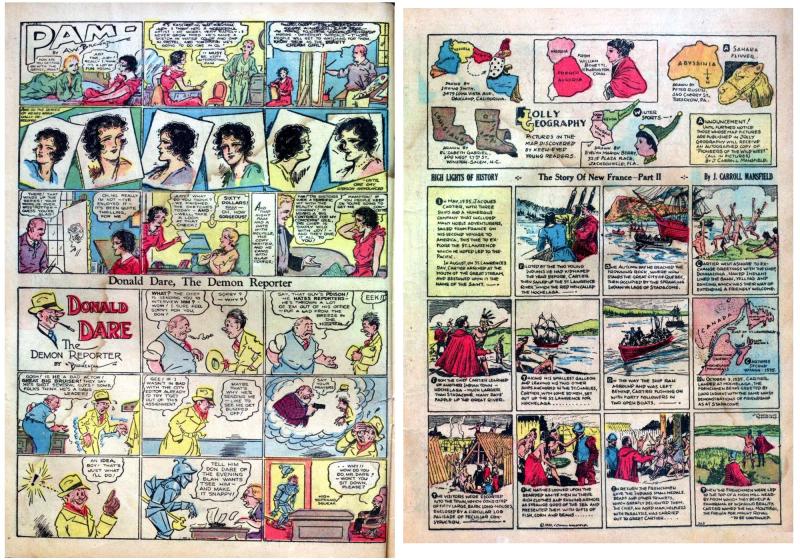
FAMOUS FUNNIES No. 1 (July ’34); Pam and Donald Dare by A.W. Brewerton; Jolly Geography and Story of New France by J. Carroll Mansfield
At newsstands aroung May 1st in ’66, the 25 cent Giant-sized SUPER HEROES VERSUS SUPER VILLAINS No. 1 (1966) is the best saddle-stitched collection of stories you’ll ever find. See: SUPER-HEROES by any other name would . . .]
On sale the 21st of May ’41—MILITARY COMICS No. 1 (August ’41) presents the first story of Blackhawk (story by Will Eisner and Bob Powell; art by Chuck Cuidera)–plus Quality’s version of Miss America and Jack Cole’s Death Patrol. And BULLETMAN (along with his partner, Bulletgirl) gets his own title when Fawcett releases the Summer ’41 issue (No. 1).
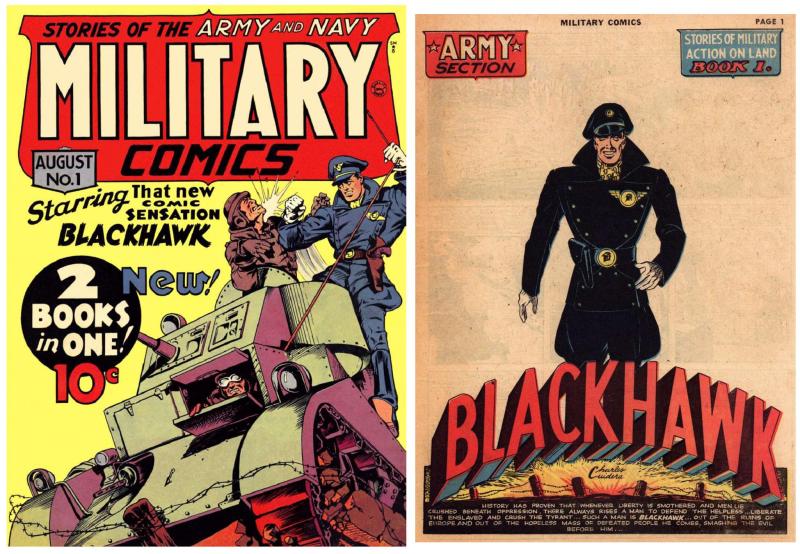
MILITARY COMICS No. 1 (August ’41)’ cover by Will Eisner (wth Gill Fox); Blackhawk splash page by Chuck Cuidera.

MILITARY COMICS No. 1 (August ’41); Miss America art by Elmer Wexter; Death Patrol art by Jack Cole.
On May 3rd of ’38, Siegel and Shuster’s Man of Tomorrow leaps into ACTION COMICS No. 1 (June ’38) and the world will never be the same. Also in this issue, Fred Gardineer’s Zatara the Magician.
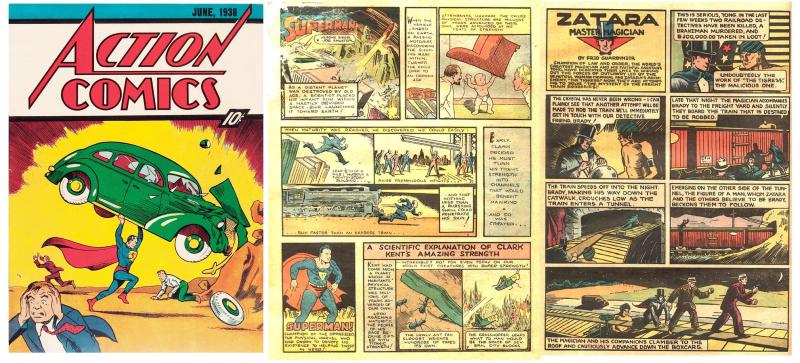
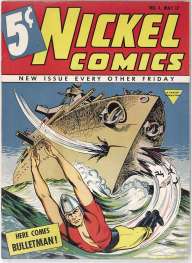 Fawcett tries to undercut the competition by publishing a five cent funny book, NICKEL COMICS No. 1 (cover date: May 17 ’40), on sale the 3rd of May ’40, which features the first appearance and origin of Bulletman (story by Bill Parker; art by Jon Smalle). At 32 pages plus cover, this comic anticipates the standard format for modern comic books.
Fawcett tries to undercut the competition by publishing a five cent funny book, NICKEL COMICS No. 1 (cover date: May 17 ’40), on sale the 3rd of May ’40, which features the first appearance and origin of Bulletman (story by Bill Parker; art by Jon Smalle). At 32 pages plus cover, this comic anticipates the standard format for modern comic books.
1948 is the tenth anniversary for the Man of Tomorrow and, on May 5th, SUPERMAN No. 53 (July-August ’48) provides a full telling of the Caped Kryptonian’s origin story–written by Bill Finger with art by Wayne Boring and Stan Kaye.
On display the 6th of May ’42, three covers from three competing publishers, all in support of the Allies’ effort against the Axis powers, each in their own manner: MASTER COMICS No. 27 (June ’42) has Captain Marvel Jr. flashing the V for victory sign, art by Mac Raboy. WINGS COMICS No. 23 (July ’42) gives a dramatic portrait of the war in the Pacific theatre, art by Gene Fawcette with Dan Zolnerowich. And SUPERMAN No. 17 (June-July ’42) shows the Man of Tomorrow taking on Hitler and Tojo in person, art by Fred Ray cover. The story inside the latter funny book features Man or Superman? where Lois Lane first suspects that Clark Kent might be the Man of Steel.
On the 7th of May ’74, DC publishes two more tabloid sized collectibles. Joe Kubert’s adaptation of THE RETURN OF TARZAN by Edgar Rice Burroughs is collected in LIMITED COLLECTORS’ EDITION C-29. And SENSATION COMICS No.1 (featuring Wonder Woman, Wildcat, Mr. Terrific and others) is given a facsimile reprint in FAMOUS FIRST EDITION C-30. Meanwhile, the Punisher forms an uneasy alliance with the THE AMAZING SPIDER-MAN in issue No. 135 (August ’74) of the Web-Slinger’s Marvel mag–story by “Gwen-killer” Gerry Conway; art by “War-artist” Ross Andru and “Frantic-fixer” Frank Giacoia; cover by “Romantic-poet” John Romita.
top
***
FLY LITTLE WHITE DOVE FLY–the Bells
. . . fly little white dove fly, spread your wings, sing out your cry, to the second week in May . . .
The first issue of MISS AMERICA COMICS from Timely (Marvel) debuts on the 8th of May ’44–in comic book format. The next issue is in magazine format and the title changes to MISS AMERICA MAGAZINE (with photo covers).
Ten cents and no taxes will get you SUPERMAN No. 114 (July ’57) on May 9th of ’57–but the Man of Steel can’t escape the taxman when the IRS tries to recupe Superman’s Billion Dollar Debt–this story is rehashed as Superman Owes a Billion Dollars in SUPERMAN 148 (October ’61).
Talk about your baby-talking toddlers! No, this is not a plug for SUGAR AND SPIKE–on the 9th of May ’63, it’s SUPERMAN’S GIRL FRIEND, LOIS LANE No. 42 (July ’63)–where the Girl Reporter and the Man of Steel have reverted to infants! Also in this ish, the curse of the monkey’s paw.
On sale the 9th of May ’67, BATMAN 193/G-37 (July-August ’67) features 6 Suspense Filled Thrillers! And another complete newspaper syndicated story never before published in any magazine!
The Giant-sized BATMAN 233/G-85 (July-August ’71) is devoted to stories about Bruce Wayne–cover art by Dick Giordano. In the drugstores on May 11th of ’71.
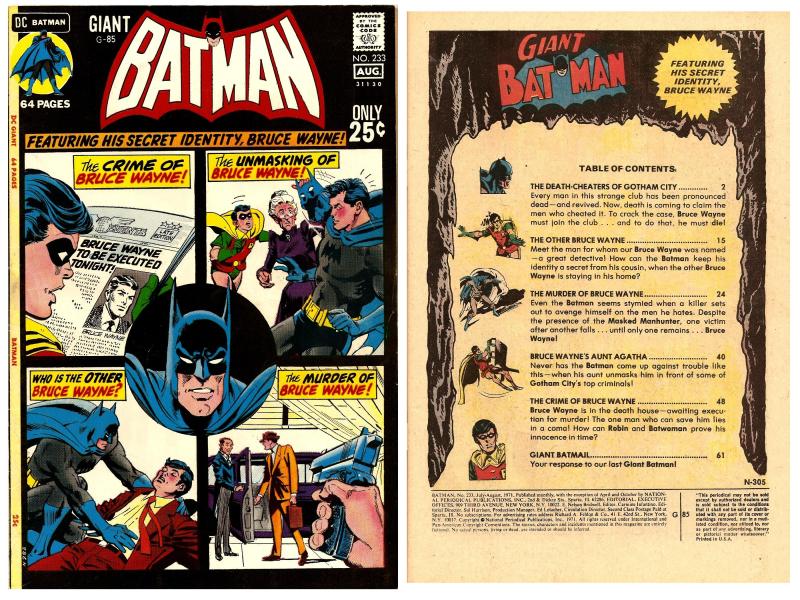
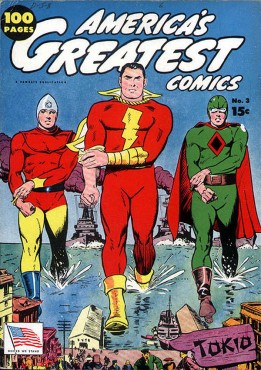 At newsstands the 13th of May ’42, on Mac Raboy’s cover for AMERICA’S GREATEST COMICS No. 3 (May ’42)–Fawcett’s heavy hitters aren’t messing around, they’re ready for a fight!
At newsstands the 13th of May ’42, on Mac Raboy’s cover for AMERICA’S GREATEST COMICS No. 3 (May ’42)–Fawcett’s heavy hitters aren’t messing around, they’re ready for a fight!
Mystery and mayhem lurks on the spinner racks for May 13th of ’71, as Bernie Wrightston provides yet another evocative cover for HOUSE OF MYSTERY No. 193 (July-August ’71). Meanwhile, a blind mystic hopes to save a SUPERMAN in the 240th (July ’71) issue of the Metropolis Marvel’s Amazing New Adventures (story by Denny O’Neil; art by Curt Swan and Dick Giordano) [For more see Maybe I’m Amazed, MY SUPERMAN SUMMER.]
On sale May 14th of ’41, POLICE COMICS No. 1 (August ’41). Several Quality heroes were introduced in this issue–Phantom Lady, the Human Bomb, Firebrand–but the comic is best remembered for the first appearance of Jack Cole’s Plastic Man. Also on the newsstand, yet another Fawcett hero gains his own title, when MINUTE MAN No. 1 makes its timely debut.
top
***
. . . gotta catch a moon train, gotta be there on time, for the third week in May at the end of the line . . .
Beginning on May 15th of ’48, the voluptuous vision called VENUS leaves her home on the second planet from the Sun to dwell among us mere mortals on Earth, in issue No. 1 (August ’48) of her Timely magazine.
On May 15th the newsstands feature three new No. 1 titles from Harvey for 1960, with August cover dates: HOT STUFF SIZZLERS, MUTT AND JEFF JOKES and WENDY, THE GOOD LITTLE WITCH.
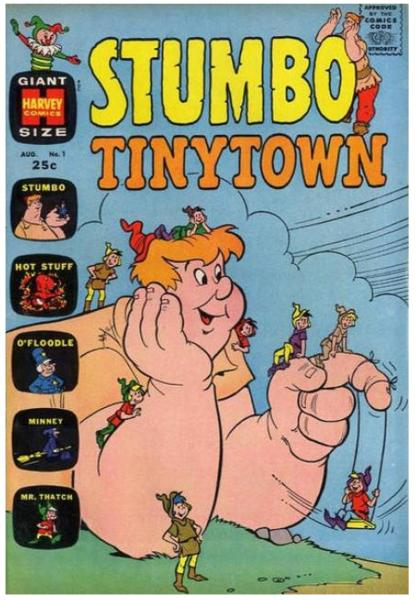 Stumbo the (friendly) Giant gets his own Giant-size title, with stories and art by Warren Kremer, when STUMBO TINYTOWN No. 1 (August ’63) hits the newsstands the 15th of May ’63.
Stumbo the (friendly) Giant gets his own Giant-size title, with stories and art by Warren Kremer, when STUMBO TINYTOWN No. 1 (August ’63) hits the newsstands the 15th of May ’63.
Now it can be told, the cosmic origin of THE SILVER SURFER, in a 38 page epic from Stan Lee, John Buscema and Joe Sinnott, in issue No. 1 (August ’68) for the Sentinel of the Spaceways–a big 64 page magazine, on sale May 16th of ’68.
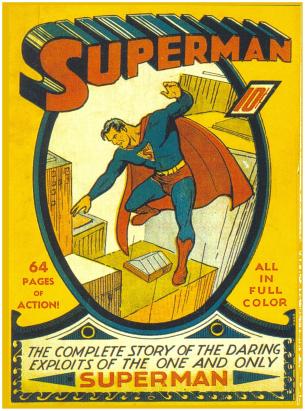 Reprinting stories from the initial four issues of ACTION COMICS, the first issue of SUPERMAN also adds detail to the Man of Steel’s origin, plus extra feature pages. At newsstands on May 18th of ’39.
Reprinting stories from the initial four issues of ACTION COMICS, the first issue of SUPERMAN also adds detail to the Man of Steel’s origin, plus extra feature pages. At newsstands on May 18th of ’39.
ALL WINNERS COMICS No. 1 (Summer ’41) is a congress of Timely’s top selling players in 1941, hitting the stands on May 20th.
Coming out on the 20th of May ’59, Joe Simon and Jack Kirby collaborate on [ADVENTURES OF] THE FLY No. 1 (August ’59). Joe Simon created Tommy Troy, who has much in common with Billy Batson and Peter Parker.
They sing, they tell jokes and now they have their own comic magazine–THE ADVENTURES OF DEAN MARTIN AND JERRY LEWIS No. 1 (July-August ’52) hits the stands on May 21 ’52–cover, story and art by Howie Post, Kitty Karr back-up by unknown.
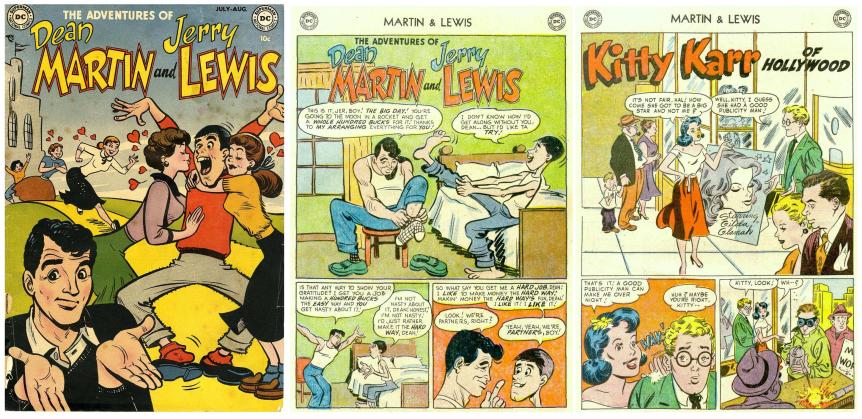
THE ADVENTURES OF DEAN MARTIN AND JERRY LEWIS No. 1 (July-August ’52); cover and feature story by Howie Post; Kitty Karr by unknown.
top
***
All on sale dates might be approximate, as provided by Mike’s Amazing World of Comics (The Newsstand) and by other sources.
All characters, logos, and images are owned and © 2013 by current copyright holders. They are used here for educational and review purposes.

